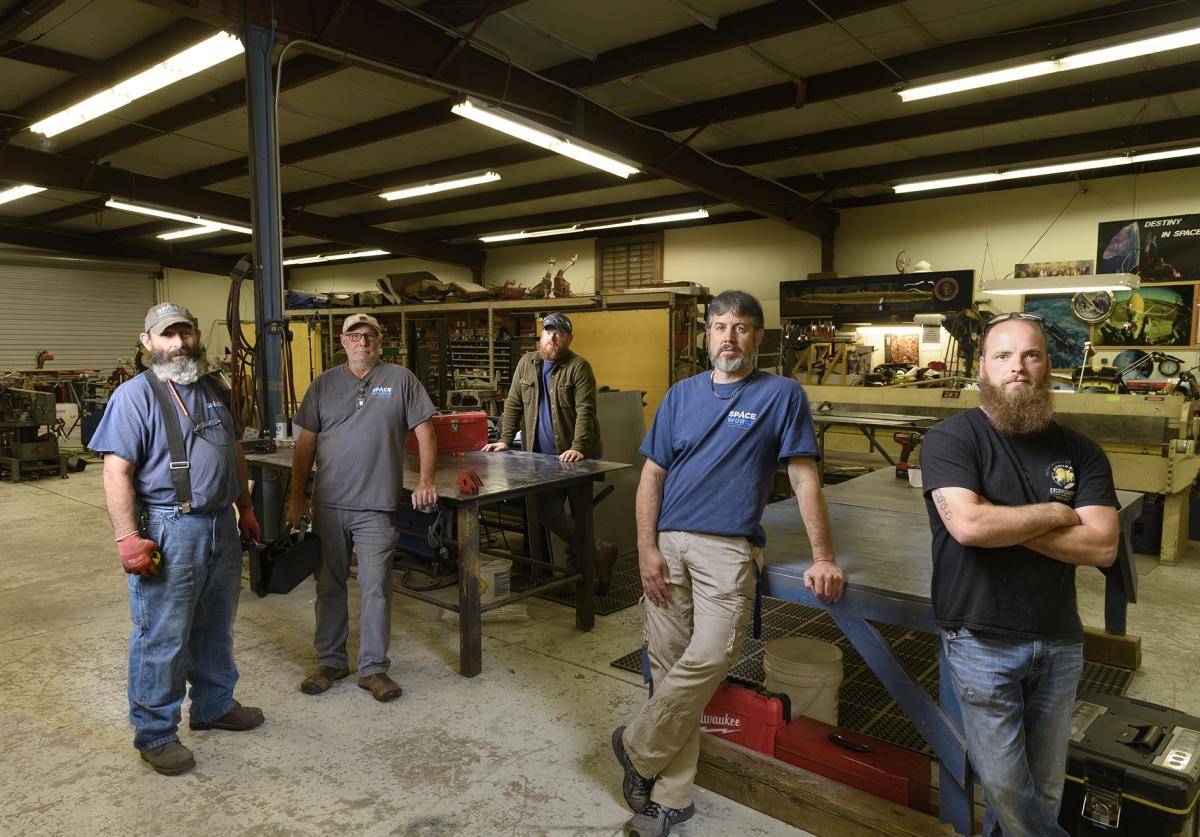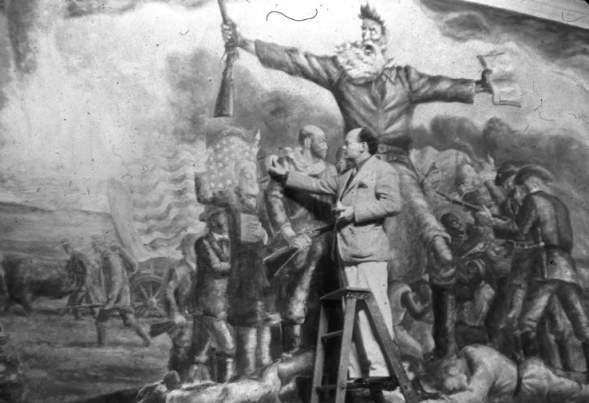
A Kansas crew of expert technicians restores, recreates and sometimes reimagines iconic space artifacts for public displays
Shortly after the Cosmosphere opened its doors in 1982, curators and officials realized they required technological expertise to maintain some of the Hutchinson-based museum’s prize exhibits and expand its display into what is now the largest collection of American and Soviet/Russian space exploration artifacts. By the late 1980s, this team of experts—SpaceWorks—was in place. It has since gone on to fabricate some of the museum’s showcase items and to collaborate with institutions such as NASA on key restoration projects.
SpaceWorks’ five technicians have learned to be creative as they work with wood, metal, plastics and other materials in an off-campus Hutchinson workshop full of table saws, an aluminum milling machine and other devices, including a mechanism capable of lifting up to five tons of gear. The team uses this equipment to create spot-on replicas and fabricate display cases, as well as to provide artifact transportation and installation. The technicians also frequently become reverse engineers, working from original blueprints and old photos to conserve and restore machinery that was once cutting-edge but is now no longer in use.
“We’ve completed some of the most important preservation and entertainment projects regarding humans’ exploration of the stars,” says Jack Graber, the head of the Cosmosphere’s SpaceWorks division.

One of SpaceWorks’ showcase restoration items is the Apollo 13 Command Module, Odyssey. After the devastating explosion felled the spacecraft in 1970, it was gutted and its parts and hardware were parceled out to various locations. SpaceWorks obtained some remains of the craft in the 1990s and worked to restore it from 1995–1997.
Shortly after this project, SpaceWorks restored Mercury capsule Liberty Bell 7 and then created a touring exhibit. Work began in 1999, nearly 38 years after the capsule sank and was eventually recovered from the Atlantic Ocean. The capsule was kept submerged underwater in a tank for the first portion of work that removed the seawater salt residue. Then, the main restoration began with approximately 7,000 hours of labor by 12 full-time staff and 8 volunteers. At a cost of $250,000, the team examined, cleaned, and reassembled 30,000 parts. They also removed and examined 10 miles of wire.
More recently, when NASA wanted to honor the 50th anniversary of its Apollo 11 mission by recreating Mission Control at Johnson Space Center, SpaceWorks stepped in to restore vintage control consoles to their 1960s character. It was no small task, as the consoles—each five to six feet in length and four to five feet in depth and height—had sat in the Houston control room for more than two decades.

Taking their clues from oral histories with former flight directors as well as from archival material, technicians began to meticulously replicate the consoles’ original appearance and functionality. The SpaceWorks team first removed corrosion and debris on the consoles and then stripped away hardware that had been added later (during the space shuttle control room era). Because the consoles’ original cathode-ray tubes (CRTs) were no longer usable, the technicians illuminated buttons and switches using modern technology.
The project took approximately three years, from NASA’s initial inquiry to completion. In October 2019, the finished project received a President’s Award for National Leadership from the National Trust for Historic Preservation. The entire SpaceWorks team was sent down to Houston for the ribbon cutting, following their gear, which had arrived in customized transport.
“The first two rows were shipped back to NASA via a Super Guppy [transport plane],” says Jim Remar, the Cosmosphere’s president and chief executive officer. “Everything else shipped via 53-foot trailers, in special shipping cradles fabricated by SpaceWorks.”

In addition to their work at the Cosmosphere and with NASA, SpaceWorks has helped prepare exhibitions for various American and global museums and traveling shows, as well as for numerous film projects. The division created 80 percent of space-related equipment used in the movie Apollo 13 as well as items for First Man and For All Mankind (Apple TV).
For the team in Hutchinson, each restored or recreated article is a chance to make a local contribution to efforts to remember and honor the world’s astronauts and cosmonauts as well as the scientists and crews who made their exploration possible.
History of Cosmosphere International Science Education Center & Space Museum
The Cosmosphere traces its roots to 1962, when Hutchinson resident Patty Carey opened a small planetarium on the Kansas State Fair Grounds. Four years later, the project found a home on the Hutchinson Community College Campus, and a group of boosters began the organizing work that eventually led to the creation of the 35,000-square-foot Kansas Cosmosphere, which opened in 1982.
Today the Cosmosphere, a longtime Smithsonian affiliate, boasts three levels of permanent galleries, including a gallery depicting early German rocketry and the Astronaut Experience gallery featuring approximately 100 artifacts associated with the U.S. shuttle program, the Russian space station, the International Space Station, and more.
Visitors can also view documentaries at the 4K digital projection theater, enjoy a show in the Justice Planetarium, and gasp at small explosions during daily live science demonstrations in Dr. Goddard’s Lab.
During summers, the facility houses children’s educational camps of various lengths that allow students opportunities such as working with an Astralis capsule simulator, drones, robotics and more.
Cosmosphere
(800) 397-0330
1100 N. Plum Street | Hutchinson
The Cosmosphere is generally open Mondays–Saturdays, 9 am–7 pm and Sundays, noon–7 pm, but be sure to check in advance in case of holidays or special events.
Ways to Stay Connected
More Articles You'll Enjoy
Black History Trail of Geary County
Mar 08, 2024Jim Sands, President of the Black History Trail of Geary County / Photography by Nick Krug A county… Read More
Quindaro: A Great, Nearly Lost City of Free Peoples
Mar 07, 2024Photography by Andrea LaRayne Etzel & Carter Gaskins Quindaro was an abolitionist frontier city… Read More
Historic Hotels in Kansas
Feb 02, 2024Grand old lodgings in Kansas offer peek into the past Historic hotels offer more than a good… Read More
From the Archives: Remembering John Steuart Curry
Jan 15, 2024Editor's Note: This article was originally published in the winter of 1992 by Don Lambert… Read More
From the Archives: Birth of the Helicopter
Jan 08, 2024Editor’s Note This article was originally featured in the winter issue of 1983 by Joan L… Read More









